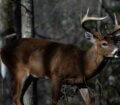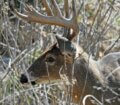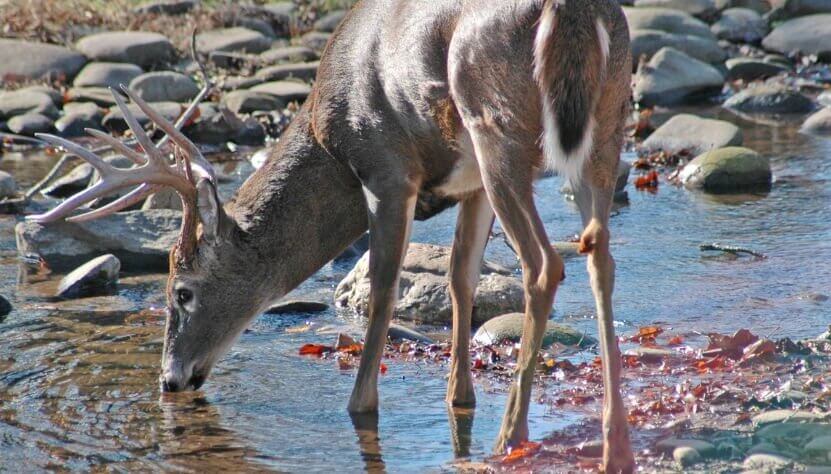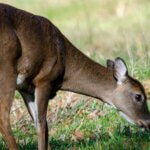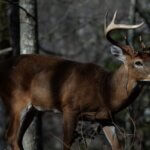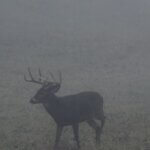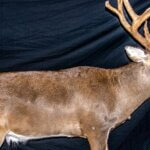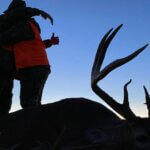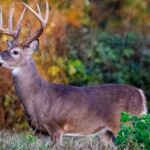Editor’s Note: Deer season starts now. You can improve your chances of taking deer by building stalking trails in pine plantations and using trail/motion sensor cameras. You’ll open-up more land and possibly take bigger bucks on the property you hunt too. Some of the biggest bucks on the land you hunt may live in 2- to 15-year-old pine plantations where the bucks can survive for many years and only come out of the pines when they experience no hunting pressure.
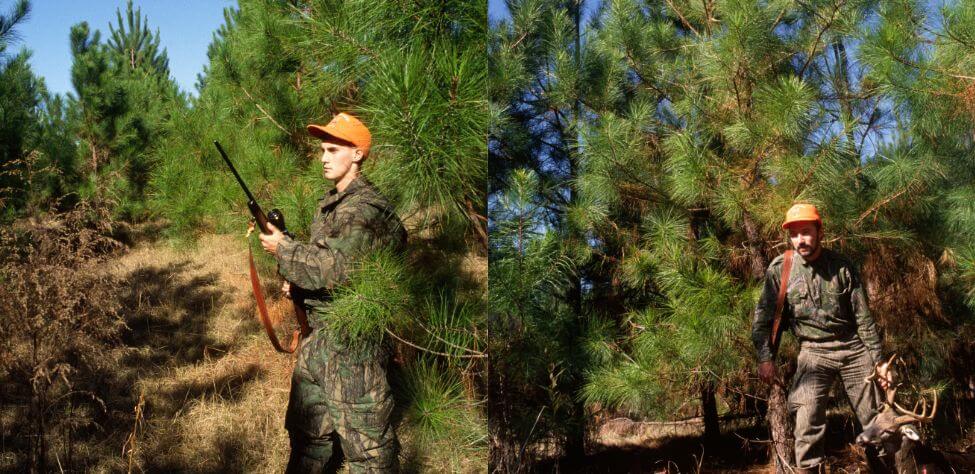
Wildlife biologist and forester Mark Thomas suggests that to install stalking lanes for deer that you use an ATV with a sprayer attachment to quickly and easily put-in a stalking lane through even the thickest cover, without damaging the pines.
“Most pine plantations are planted on an 8- by 10-foot spacing, which enables you to grow 720 trees per acre,” Thomas explains. “Each row should average about 10-feet wide with about 8 feet between each tree, which means you should be able to move your ATV down the row easily and put in the stalking trail between the pine trees planted in the rows.”
Once you have the sprayer attached to your 4-wheeler, select a herbicide with the active ingredient Imazapyr. “The mixture of herbicide to water will depend on the type of low-quality hardwood brush that you want to control,” Thomas emphasizes. “Typically, a 1- to 2-percent of herbicide to a volume of water is recommended.”
You’ll find the stalking trail much more than just a path that allows you to move through the young pines without making noise that spooks a deer. According to Thomas, “We call these trails with blind corners – herringbone stalking trails. When you have your equipment and your herbicide ready, determine the direction of the prevailing wind. For instance, in much of the Southeast, the prevailing wind usually comes from the northwest. Therefore, the most-logical place to begin the stalking trail is on the southeast side of a young pine plantation.”
Use Flagging Tape: Mark the trail you want to make. Thomas emphasizes that, “The trail should go through bedding, feeding and escape habitat inside the young pine plantation. As you lay-out the trail, you need a good number of 45- to 90-degree turns in the trail.”
You create your stalking trail between the rows of young pines. A productive stalking lane, which may run 1/2- to 1-mile deep into the pine plantation, will have 10 to 25 of these sharp turns in it. Since you only need to make a trail about 4-feet wide, set your sprayer to spray a swath about this width.
Select a Herbicide Pine Trees Can Tolerate: Thomas mentions that you need to choose a herbicide for spraying young pines that won’t damage the trees. Most pines are tolerant of various herbicides.
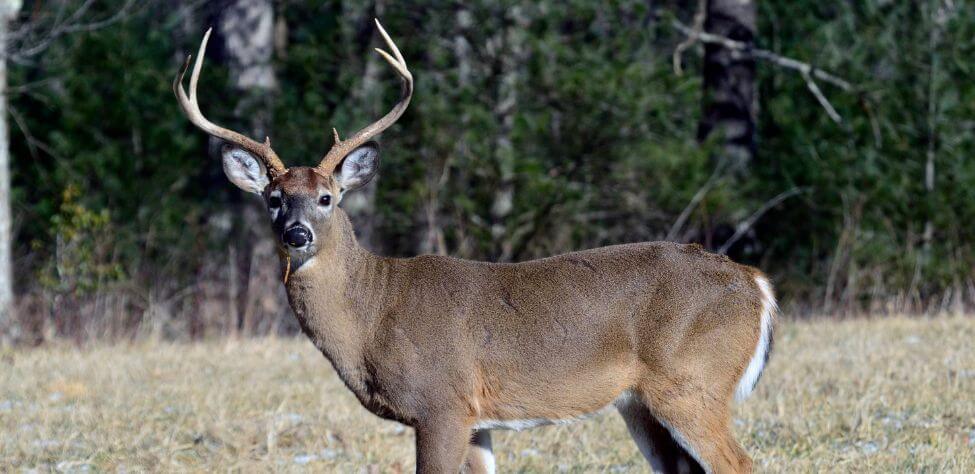
Understand the Way to Spray Pines with Herbicide: Thomas says, “Turn between the trees planted in rows. As you start spraying the trail, go 40 to 60 yards before you make your first 45- to 90-degree turn. Move across the rows between the trees for 20 to 40 yards. At that point, spray between the rows to the left and the right of the trail for 30 to 40 yards, making the ends of these two feeding areas turn back slightly to create a herringbone pattern. You later can plant the two herringbone feeding areas off the main trail with green field plantings. Or, you can fertilize these feeding lanes to cause the natural plants to regenerate themselves and create lush foliage for deer. Then return to the main trail, and go across the rows in the opposite direction of where you’ve already sprayed, continuing to spray and creating more feeding lanes on each side of the main trail.”
Prune the Pines’ Lower Limbs: “Use a pruning saw to cut the lower limbs of the young pines along the edge of the trail and the feeding lanes,” Thomas explains. “Pruning these lower limbs, especially where the trail makes 45- to 90-degree turns, will allow you to see into the feeding areas where the trail turns back and to keep the limbs from brushing up against you and collecting odor that the deer will detect.
“Pruning the lower limbs of the pines close to the trunk doesn’t hurt the trees at all and actually increases the tree’s saw log potential. Once you’ve created these two feeding areas off the main trail, your later fertilization program will be the main ingredient required to pull deer into these feeding places with their highly-palatable and very-nutritious food.”
Follow the Flagging Tape: After making these two feeding zones on either side of the stalking trail, continue to follow your flagging tape until you’ve created a long trail with 10 to 20 herringbone feeding areas coming off the main trail. The size of the pine plantation and the terrain will dictate how long you need to make the trail and how many feeding zones you can put on either side of the trail. Once you’ve sprayed the trails, and the hardwood brush has died back, then come in and clear the trails.
Tomorrow: Use Trail Cameras for Deer Surveys

How to Hunt and Take Big Buck Deer on Small Properties
In this book, you’ll hear from 14 hunters who either have gained permission or leased properties as small as six acres to as much as 250 acres, and how they consistently take older-age-class bucks off these little lands.
VERSIONS: AUDIBLE, KINDLE & PRINT

Jim Crumley’s Secrets of Bowhunting Deer
Using a black magic marker and a gray work jumpsuit, Jim Crumley of Buchanan, Virginia, drastically changed the nature and purpose of hunting camouflage when he created the first sportsman’s camouflage – Trebark. Crumley’s love of bowhunting and his desire to be more invisible changed hunting clothing forever.
In this hunting guide, he shares the wisdom that he’s learned throughout his lifetime about how to be a hunter, how to find a deer lease, how to scout for deer, and more.
Special features include how to:
- Have a magic 60 acres to hunt
- Decide the best equipment to use
- Find deer year-round
- Locate land to hunt
- Know the best place to put your tree stand
- Get bucks within bow range
VERSIONS: AUDIBLE, KINDLE & PRINT

How to Hunt Deer Like a Pro
How do you know if the land you hunt has a trophy deer on it? Wildlife manager Bob Zaiglin, of Uvalde, Texas and Jim Crumley, the father of modern-day hunting camouflage, tells you how to find out. GPS can make finding and taking that trophy buck easier. This hunting guide will teach you how to hunt big bucks where no one else can find them, how to call deer, and how to become versatile as a deer hunter, so that if one deer tactic doesn’t work, another one will.
In the chapter, “How to find Bucks at Scrape,” Dr. Keith Causey, retired professor of Wildlife Science at Auburn University, describes the best way to hunt a scrape.
Brad Harrison of Neosho, Missouri, is a nationally-known videographer, professional deer hunter and master at calling deer. Another master is Will Primos of Primos Game Calls. These two experts will tell the best deer calls and when to use them in this book.
And for over 20 years, Bo Pitman, lodge manager of White Oak Plantation, has been studying deer movement patterns. He explains what types of conditions are best for predicting deer movement.
VERSIONS: AUDIBLE, KINDLE & PRINT

Deer hunting and deer hunters are drastically changing each year. To learn new techniques for hunting deer and have more places to hunt, I’ve interviewed some of the best deer hunters in the nation and share their tactics in How to Hunt Deer Like a Pro: Volume II.
In Chapter 10, Jacob Lamar tells you his tactics for consistently taking older-age-class bucks on public lands in several states. Chapter 11, Bob Walker explains how to find places on public lands where you can hunt that 99 percent of the other hunters never have considered hunting. The Bonus Chapter with David Ramey tells you how, where, when and with what equipment to take big Kansas bucks on public lands by hunting in 100-degree weather when others won’t hunt.
Chapter 13, Mark Drury, his family and his guests take mature bucks every season by having more small places to hunt rather than one large property. Drury explains the strategy of having satellite farms to hunt that only may be 50-150 acres each or less. Chapter 15, Pat Reeve, who hunts far-northern states and Canada, says, “I don’t like hunting for mature bucks until the weather is 20 degrees or less.” Chapter 4, Dr. Larry Marchinton says that funnels are the most-reliable stand sites to hunt for big bucks and tells why.
VERSIONS: AUDIBLE & PRINT

